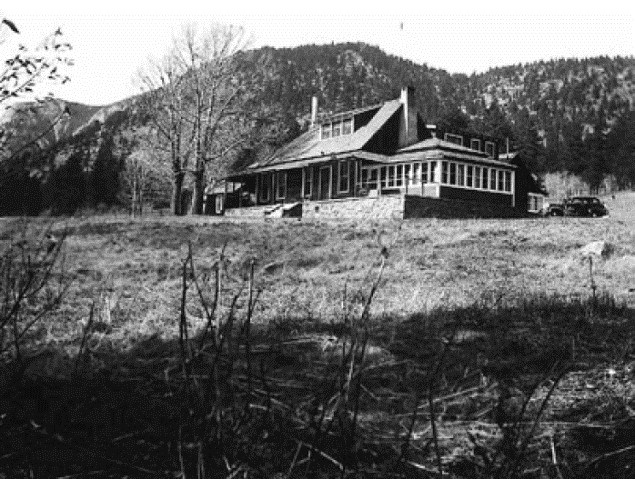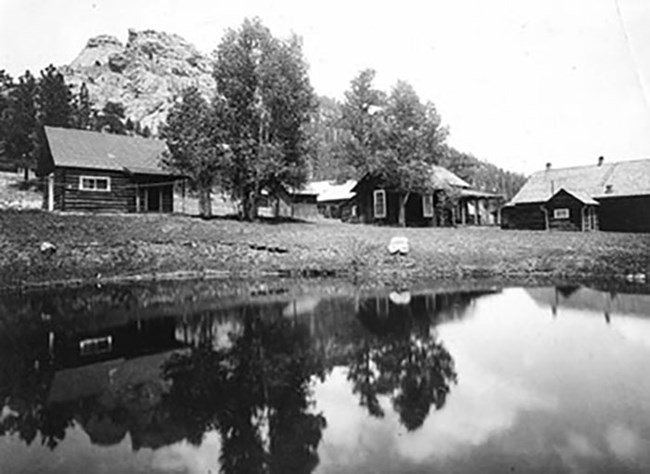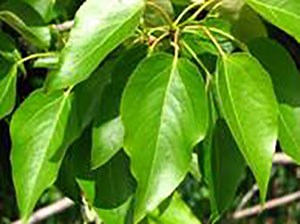Last updated: January 26, 2022
Article
Balm of Gilead Trees at McGraw Ranch
Specimen Details

Photo by McGraw Family. In the NPS Cultural Landscape Inventory report
- Location: McGraw Ranch, Rocky Mountain National Park, Colorado
- Species: Balm of Gilead (Populus candicans)
- Landscape Use: Ornamental Planting
- Age: Estimated planting 1912
- Condition: Good
Significance
McGraw Ranch is a former cattle ranch and guest ranch nestled in the Cow Creek valley on the eastern edge of Rocky Mountain National Park. The ranch’s buildings and landscape features are associated with the development of ranching and tourism in the Rocky Mountains. Settled as a cattle ranch in 1884, McGraw Ranch was converted into a guest ranch in 1936. In 1988, the National Park Service bought the property, and continues to manage the site as a research facility and recreational area.

Photo by McGraw Family. In the NPS Cultural Landscape Inventory report
While two of the original Balm of Gilead trees have fallen down, several trees continue to grow in their original locations at the southwest corner of the main house, in front of the log cabin, and on the east side of the main house. These trees are complimented by other trees and shrubs planted by the McGraws, including lilac and groupings of spruce.
Botanical Details

U.S. Forest Service / Michelle Baumflek
Balm of Gilead is a medium-sized deciduous tree that can grow up to 70 feet tall. Its dark green, egg-shaped leaves typically measure 3-5 inches long and 2-5 inches wide. A member of the cottonwood family, the seeds of Balm of Gilead ripen in early summer attached to a cotton-like substance that aids wind dispersal. As Balm of Gilead trees age, their bark slowly turns from light brown to grey, with ridged edges becoming more prevalent over time. The native habitat of Balm of Gilead trees is moist riparian areas that can stretch northward into boreal and mountain forests. It is considered the northern most New World hardwood. Given its prevalence in colder climates, its root system is shallow.
The resin form Balm of Gilead is understood to be antibacterial and antifungal. Because of these properties, the buds have been used to make cough syrups and first-aid salves to treat small wounds. It is not known whether Irene McGraw’s choice of the Balm of Gilead trees at McGraw was related to these medicinal properties.

NPS / Chris Kennedy
- McGraw Ranch Cultural Landscape Inventory report
- Plant Profile: Balm of Gilead. Sustaining Forests: Culturally and Economically Important Nontimber Forest Products of Northern Maine. U.S. Forest Service Northern Research Station.
